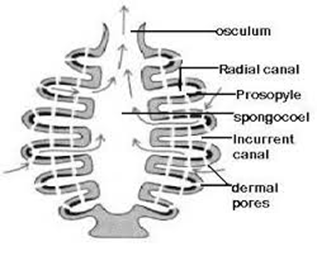Prokaryotes: Structure & Examples | Biology Blog
Prokaryotes
characteristics, cell structure , examples of prokaryotic cells
Prokaryotes are consist of eubacteria and arceha. The Organism that comes under Prokaryotes are microscopic, simple organisms and the cell lacks a true nucleus. The major characteristics of prokaryotes are as below -Features of prokaryotic Organism -
- True membrane-bound nucleus - absent
- DNA complexed with histone - absent
- Number of chromosomes - One
- Ribosome - 70 S and 80 S
- Unit membrane-bound organelles- absent
- cell wall - present in most of the prokaryotic cells and made up of peptidoglycan.
- Mitosis and meiosis - absent
- genetic recombination - partial
- Mitochondria - absent
- chloroplast - present
- Sterol in Plasma membrane - Present
Cell Structure Of Prokaryotes- The word prokaryotes comes from the Greek word where Pro means before and Karyon means nucleus. The prokaryotic organism does not have true nucleus and nuclear membrane. there are following structure present in the cells of prokaryotes -
- Capsule - In most of the prokaryotes organisms like bacteria, an extra layer is present in addition to the cell wall that protects the organisms from any harm and also helps in moisture retention.
- Cell Wall - The cell wall is present in most of the prokaryotes and maintains the shape of the cell. In plants, the cell wall is made up of cellulose while in that of fungi it is made up of Chitin.
- Cytoplasm- The gelly like structure distributed overall the cell is known as Cytoplasm. In the cytoplasm , cell organelles are present.
- Cell Membrane - The cell membrane is a layer that protects the entry and exit of the foreign substances in the cell.
- Ribosomes - Ribosomes are the protein factory of the cell. There are two types of ribosomes present in the prokaryotic cells one is 70 S and the other one is 80 S.
- Pilli - The hair-like outgrowth present on the capsule of the cell is known as pilli that further helps in reproduction.
- Flagella- these are also hair-like structure helps in the movement of the cell.
- Plasmid - Plasmid is the extrachromosomal circular DNA, it is also present in the prokaryotic cells.
Bacterial Cells -
- Bacterial cells are microscopic, relatively simple organisms.
- They do not have true nucleus present in them.
- Pilli, flagella, and capsule are some unique features of bacterial cells.
- The extrachromosomal DNA, also called plasmid are present in the cell.
- They have different types of shapes like - rod shape, cocci , vibrio, spirilla, and bacillus.
- Generally, they are 0.2 to 0.5 in diameter but some bacteria are so large in size that are visible to the unaided eye. For example - Thiomargarita namibiensis.
Archebacteria -
- Archebacteria are highly diverse with respect to morphology, reproduction, physiology, and ecology.
- They can be aerobic, anaerobic, facultative, and obligation.
- They do not have true nucleus.
- Ribosomes of the 70S are present.
- They are present in extreme aquatic or terrestrial habitats.



Comments
Post a Comment